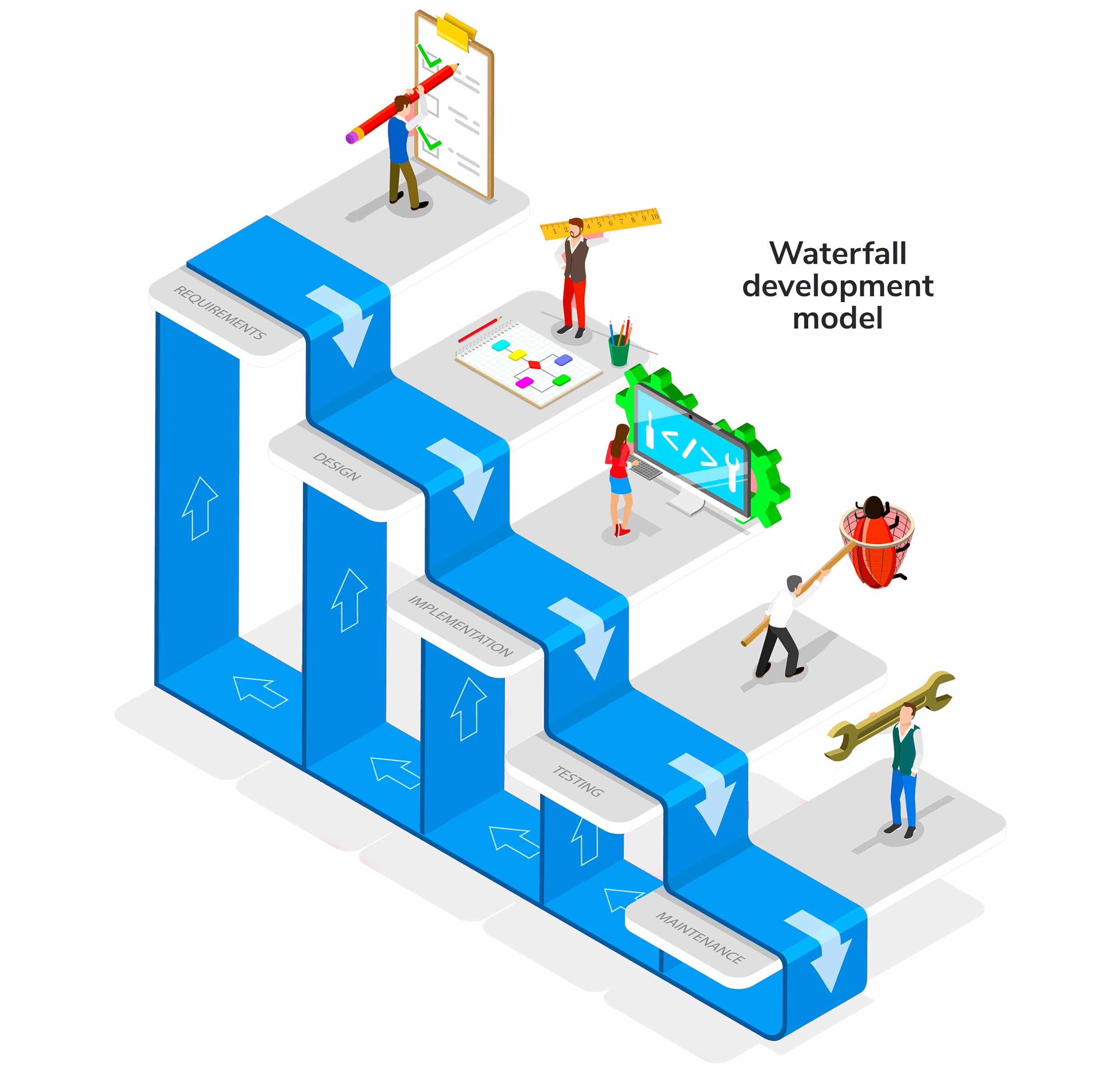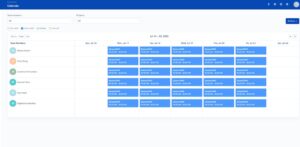Project management techniques that will improve your team’s productivity
10 min read
Introduction
Project management techniques have evolved rapidly in the last two decades. The dominant project management technique in the last century was the Waterfall method, combined with PERT/CPM. Newer techniques like Agile, Scrum and Lean came up in the last twenty years. These changes are driven primarily by a need to adapt to the faster pace of innovation and change brought about by technology.
As a business owner/manager, you need to make sure your team keeps performing at its best. One of the ways to get the best out of your team is to organize and manage their work using the best project management tool and technique. Using the right project management techniques can help your team ensure timely delivery, stay productive and manage cost.
Managing a project requires us to identify all activities that need we need to complete in order to finish the project. We cover multiple techniques for scheduling and managing these tasks. But before you can apply any of these techniques, you need to break down each activity into smaller tasks. This helps project team members easily understand the tasks, estimate time needed to complete and execute them. This is called the Work Breakdown Structure or WBS.
A work breakdown structure or WBS is a way to transform big, complex project activities into smaller, manageable blocks of tasks. Breaking complex tasks into smaller tasks makes it easy for your team to easily understand and complete them.
If you’re planning to run marketing campaign for a new product, you can break it down into smaller “packages” of work such as researching target audience, selecting channels, developing marketing collaterals etc. You can further break down each of these packages into small tasks that you can assign to a team member to complete.
In this post, we discuss seven of the most popular project management techniques. We look at strengths, limitations and suitability to different types of work.
Waterfall Project Management Technique
The waterfall technique is one of the oldest project management techniques. It has been in use for over half-a-century and is still used in many projects.
The Waterfall technique deals with project tasks in a sequential manner. You organize the tasks in stages or phases that occur sequentially. Each phase of the project can start only after the previous phase is complete. For example, a software development project is typically organized in four stages using the Waterfall technique:
Requirements
- Design
- Development
- Testing/Verification
- Maintenance
As you can see in the diagram, the Waterfall project management technique requires you to move sequentially starting with collecting requirements and ending with Maintenance.
In the Waterfall method, you collect all functional, technical and security requirements upfront. The idea is to make sure that the design and architecture will be able to take care of all current and future needs. An underlying assumption is that the requirements will either not change during development or can wait till the next round of development.
Collecting requirements upfront makes it easier to estimate effort & cost and create a more robust design. This technique worked well during the mainframe era when both business and technology were changing at a much slower pace.
But in today’s fast changing world, Waterfall’s insistence on collecting every requirement upfront does not work well. It’s an inflexible project management technique that does not lend itself well to the internet era of software development. If your project will evolve over time with frequent iterations and changes in design, then Waterfall is not the right project management technique for it.
But it still works well for projects with distinct phases that require very few iterations throughout the project life cycle, such as launching a satellite or building houses.
When to use: The waterfall technique is best suited for complex, long-term projects that do not need iterations or changes after the project starts.
PERT Project Management Technique
In the 1950s, the US Navy needed a sophisticated project management technique to manage its weapons development programs. The Program Evaluation Review Technique (PERT) was developed by the Navy to give project managers a visual tool for managing and adjust task schedules with compromising on the final completion date.
It’s a technique that helps realistically estimate the amount of time it will take to finish a project using PERT charts. In PERT, you create three different time estimates for the project:
- Optimistic estimate or the least amount of time needed to complete a task or activity
- Pessimistic or the most amount of time a task might take if something were to go wrong
- Most likely estimate or the best estimate to complete a task or event
You calculate the expected time for completing each task and the project, understanding that things don’t always go according to the plan.
The first step in PERT is to decide which tasks need to be completed in order to accomplish the project’s goal. Then you need to decide the order in which the tasks need to be completed. Some tasks cannot be done unless another task is completed. These are called Successor and Predecessor tasks.
Once the project starts, the team continuously evaluates project performance and adjusts tasks based on the three time estimates. The goal is to finish the project on schedule, even if some tasks do not go as planned.
PERT is best suited for unique and uncertain projects such as R&D activities for developing a new product or technique. Since there is no historical data on different tasks for such a project, PERT is an effective technique for estimating time and scheduling tasks.
When to use: PERT is best suited for managing one of a kind, R&D, and projects with non-routine tasks.
Critical Path Technique (CPM)
While Navy was developing PERT, the private sector was working on a similar method called Critical Path. Both these techniques visualize the project timeline and alternative paths for completing the project. CPM is often used in along with PERT.
The CPM a powerful yet simple management technique for analyzing, planning, scheduling, and managing complex projects. It focuses on:
- Identifying tasks or activities in the project are “critical” for completing the project on time. If there is a delay in completing any of these tasks, the entire project will be delayed.
- Scheduling all tasks in the project in a way that enables us to complete the project on time and at minimum cost.
The first step in CPM is to list all tasks required to complete the project with time required to complete them and their immediate prerequisite tasks. Originally, the technique required manually drawing the task schedule on paper with each task shown as a circle with time required to complete it inside the circle. Dependencies were shown by arrows. Modern project management tools like MS Project depict tasks on a horizontal time axis in the form of a Gantt chart.
All tasks that do not have a predecessor are scheduled to begin simultaneously at the start of the project. All tasks that do not have a successor are deemed to the last tasks to the completed and mark the completion of the project. Rest of the tasks are arranged in between these two sets of tasks with each task preceded by its predecessors and followed by its successors.
Once all the tasks are arranged on the timeline, you can see multiple paths from start to completion. These paths show different orders in which you can complete tasks and finish the project. The total of time needed to complete all tasks along a path is the time you need to complete the project. The critical path(s) is the one that takes the longest from start to finish. This is the minimum time necessary to complete the entire project. If a task on this path is delayed, it will delay the entire project.
One benefit of this project management technique is that you know where to focus your efforts if you want to finish the project faster. Since critical path is the fastest way to complete the project, if you can finish one or more tasks faster, you may be able to reduce the time needed to complete the project. You can, for example, assign more resources to a task to finish it faster. Shortening a critical path may sometimes make it non-critical, as some other path may now become the critical path.
Where to use: Critical Path technique should be used in complex, large projects where delivery times are critical such as construction, developing new products, military and critical infrastructure.
Kanban Project Management Technique
Kanban is probably the simplest project management techniques out there. It’s well suited for simple projects and new project managers. At its core, Kanban is a way for managing your to-do lists.
Kanban technique has three elements – Board, Card and Columns. The board is where you draw columns for arranging the cards.
In Kanban technique, you create a card for each task. The card includes details such as the person the task is assigned to and due date. Then you arrange these cards (tasks) in columns such as To-do, Doing and Done. Initially, all tasks will be in the first column. When you work on a task, you move its card to the second column, Doing. Once the task is complete, you move its card to the last column, Done.
Kanban’s popularity has increased with the increased adoption of Agile project management technique (discussed later in the post) as it is the framework used to implement agile software development.
An industrial engineer at Toyota, Taiichi Ohno, developed Kanban as part of Toyota’s lean manufacturing system. Others adopted and further developed the technique for use in services and technology industry.
Where to use: Kanban is best suited for knowledge work setting and dynamic projects or situations where work arrives in an unpredictable fashion. It’s also great for individuals for managing their work. It’s the best tool for gig workers or freelancers as it keeps them on top of their work.
Scrum for Agile Project Management
Like Kanban, Scrum is a technique for implementing the Agile methodology.
Agile methodology was developed to address the need for a faster, dynamic and adaptable way to develop software. Older techniques such as Waterfall were falling woefully short of what was needed to develop software in the internet era.
Agile process begins with the customer (internal or external) describing how the software will be used and what problem it will solve. This establishes clear objectives for the project team. In Agile, work is organized in the form of Initiatives, Epics and Stories.
Stories are short requirements written from the perspective of an end user.
Epics are large blocks of work that you further break down into Stories.
Initiatives are collections of epics with an underlying common goal.
Scrum is one of the most popular techniques for implementing Agile in software development projects. In Scrum, the work is organized around Sprints. During each sprint, the team works on one deliverable or feature. A Sprint is expected to be short, usually less than 2 weeks. In most cases, Sprints are much shorter, even as short as a day.
 Scrum teams learn through experiences.
Scrum teams learn through experiences.
Project teams in Scrum technique are small but empowered to make all decisions about the work. It’s a cross-functional team with all the skills necessary to complete its tasks. They self-organize while working on a problem and share their experiences with each other to continuously improve. After the sprint, the team holds a review meeting to review the work and make improvements for the next sprint.
The small team size and short cycles of work enable the team to make quick decisions, develop the software faster and adapt to changing customer needs.
Where to use: Scrum technique is best suited for software development projects that require fast product development with uncertain features / user needs. Most modern commercial software development teams use Scrum or a variant. Even project teams outside software can use Scrum by adapting it to their specific needs.
Conclusion
There are many techniques you can use for managing your projects. Some older ones like Waterfall are suited for large, monolithic projects where the project objectives and outcomes are pre-determined. Some like PERT/CPM are well suited for research & development work that involves tasks with uncertainties.
The newer ones like Kanban and Scrum well suited for implementing Agile project management methodology. These techniques are extremely popular for managing software development projects.




